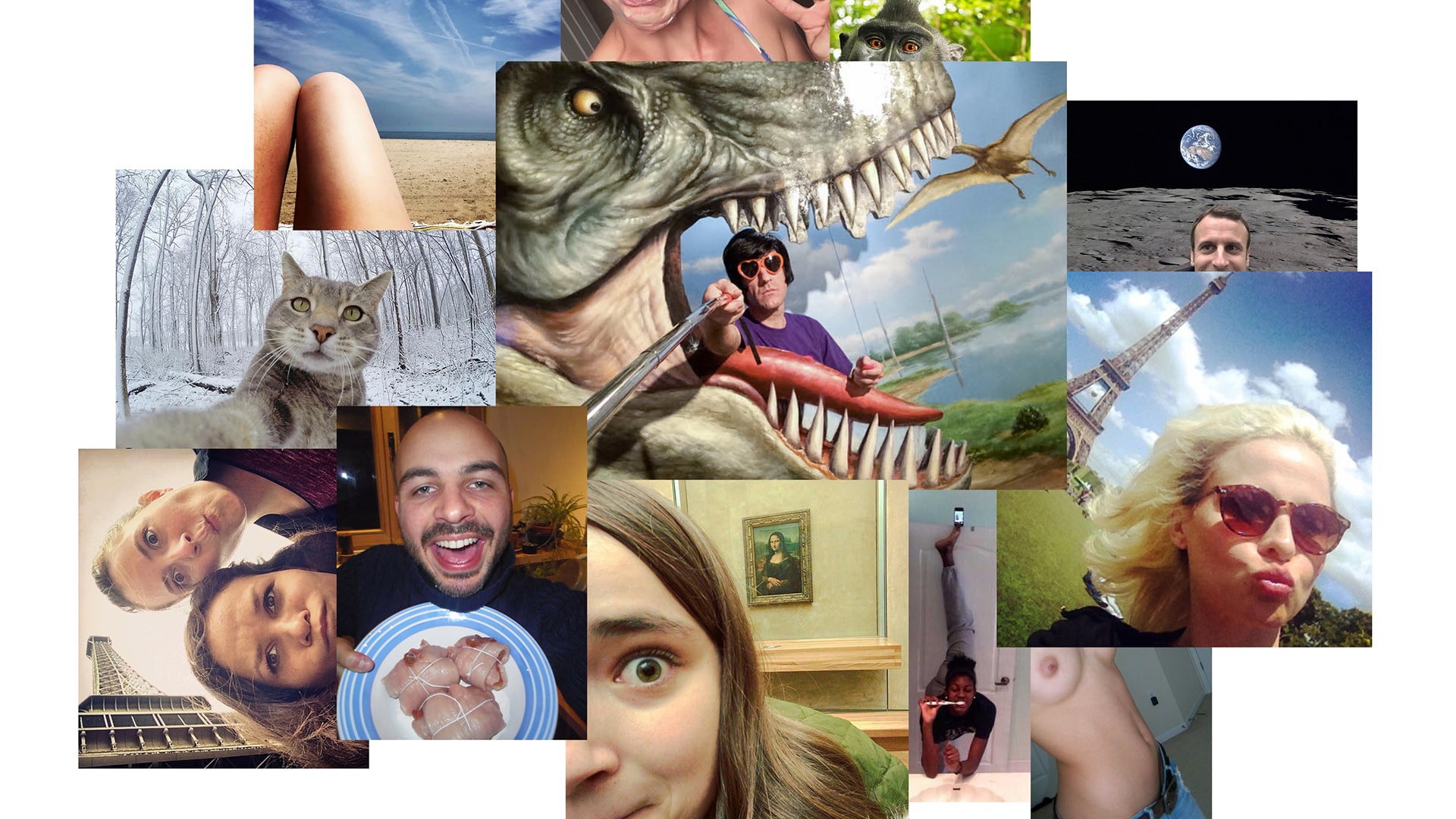
How do you define the selfie?
The word entered into dictionaries in 2013. It is defined as a self-portrait intended to be shared. So it’s not just a self-portrait, the sharing component really is key. In the exhibition, I deliberately included only selfies and not self-portraits—which have existed since the beginning of the history of photography.
Where does the word “selfie” come from?
It was used for the first time in 2002. A young Australian spent a night drinking with his friends and injured his lip. He took a photograph of his injured lip and sent it via the Internet to get a doctor’s opinion. In his message, he used the word “selfie” for the first time in history. It is a contraction between the words “self” and “photography.”
I understood that the selfie was really a new way of communicating
Selfie has quickly become a worldwide craze. How do you explain this attraction?
For years, I was quite surprised, and saw only the “egocentric” side. As a photographer, the selfie raised a lot of questions for me, especially about the inversion it generates: from now on, the camera is no longer directed outward, like the eye, it is turned toward the self. And then I understood that the selfie was really a new way of communicating, that is, rather than talking to someone or even sending them a message, we will send them a picture of ourselves. In this sense, it is not really a photograph, an elaborate construction of an image. The selfie was never intended to be aesthetically pleasing. One could even say that the difference is analogous to that between “speaking style” and “writing style.” “Speech” corresponds to the selfie.

What are the main categories of selfie you highlight in this exhibition?
In terms of how the selfie is made, I wanted to ensure that different practices are represented. More specifically, whether the camera is facing you or away from you, as in someone photographing their legs, for example. The third main category is photographing oneself in a mirror. I start the exhibition with the tourist selfie: people taking pictures of themselves in front of the Eiffel Tower for example—the most photographed monument in the world. In the same vein, there is the political selfie: Emmanuel Macron’s selfie—which has been hijacked enormously on the Internet. Then there are more specific categories: the “Olympic” selfie, where people photograph themselves in their bathroom in a very strange way; the socially engaged selfie, like residents in Tunisia who take pictures of garbage and send them to politicians to tell them to act; or the most reprehensible selfie, like those taken by affluent young Russians in front of a homeless person who is asleep…
The selfie is really capable of the best and the worst…
That’s right. And that’s why I put these engaged selfies and reprehensible selfies on the same wall, to foreground this aspect.
Prince Harry said, when someone wanted to take a selfie with him, “selfies are bad.” Does the selfie disturb you?
I think that selfies disturb a certain elite who resign to it and who, in some way, have no choice but to allow it. If we consider celebrities or political figures, the selfie is a way for them to get closer to the public, and therefore to humanize their image. I don’t think they’re happy about it, but they don’t have much choice but to agree to take selfies. In the case of celebrities, what is interesting is that, on the one hand, they produce elaborate photographs and, on the other, accept selfies of poor aesthetic quality….
In the exhibition, you also remind us that the selfie is dangerous…
Yes, there is a tragic category, which includes incidents which I have culled from a Wikipedia page that lists all selfie-related accidents, many of them fatal. There are recurring accidents: people stepping in front of oncoming trains; people falling over cliffs; people taking selfies with a weapon that misfires; people attacked by wild animals while taking selfies in a zoo, for example… The image filters out the danger and makes people oblivious to it… You can forget the reality you are in by focusing only on your camera.

Interview by Jean-Baptiste Gauvin
Selfie(s): Égo/égalité, Festival Portrait(s)
June 14 to September 8, 2019
Vichy Cultural Center 15, Rue Maréchal Foch, 03200 Vichy


